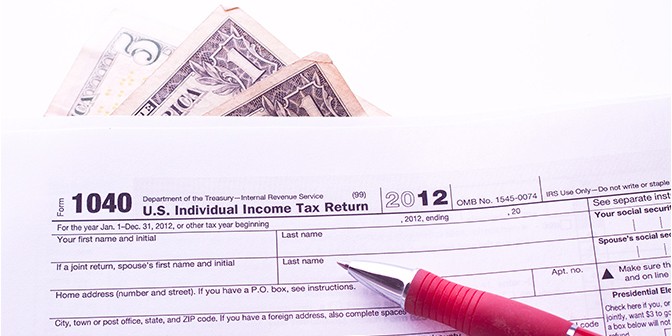In a coordinated broadside at the complexity of the tax code for small business owners, both the House and Senate held hearings Wednesday with similar themes.
The House Committee on Small Business titled its hearing “How Tax Compliance Obligations Hinder Small Business Growth,” while the Senate Committee on Small Business and Entrepreneurship hearing was called “Targeted Tax Reform: Solutions to Relieve the Tax Compliance Burdens for America’s Small Businesses.”
“Making the tax code simpler is particularly important for American small business owners as they are disproportionately affected by tax complexity—a finding that unfortunately, has not changed with time,” said House Committee on Small Business chairman Steve Chabot, R-Ohio.
He cited a study by the Office of Advocacy at the Small Business Administration that found small companies pay 67 percent more to comply with the tax code than large firms do.
“A recent update to those Advocacy studies found that firms with less than 50 employees pay, on average, $1,518 per employee in tax compliance costs, whereas firms with more than 100 pay $647,” he said.
Stephen Mankowski, national executive vice president and national tax policy chair of the National Conference of CPA Practitioners testified in relation to a recent GAO report, “Small Businesses – IRS Considers Taxpayer Burden in Tax Administration, but Needs a Plan to Evaluate the Use of Payment Card Information for Compliance Efforts.”
The committee members on both sides of the aisle were in basic agreement that the tax code has gotten much too complicated and something needs to be done, Mankowski observed.” The problem is how to simplify it. Without doing a total rewrite, it’s not an easy fix,” he said. “Several of us commented that the extenders should be passed early, with some of them being made permanent.”
As an example of the importance to the economy of these, one Congressman noted that one of his constituents sold 11 drilling rigs last year. “Six of the 11 were sold during the last three weeks of the year, as a result of the extension of the enhanced Section 179 deduction,” he said.
Mankowski was asked to testify specifically about Form 1099-K and the use of payment card information for compliance efforts.
In recent years, there has been a change in the way that business is conducted, he observed. Businesses that formerly accepted only cash or checks now accept credit cards. “The related fees have simply become yet another cost of doing business—and another element of taxpayer burden,” he indicated.
“Even after researching the processing firms to obtain the best processing rates, they learn that MasterCard and Visa have different merchant fees when compared to American Express and Discover,” he said. “If the consumer uses a credit card that includes member programs or ‘points,’ an even higher processing rate may be charged by the merchant bank.”
Under a 2008 law, the processing companies had to begin reporting credit card receipts to the IRS and the merchant in 2011 and had to add the reporting of the number of monthly transactions for 2012.
Form 1099-K, Merchant Card and Third Party Network Payments, must be issued by a payment processor once a merchant has 200 transactions and sales of at least $20,000 annually.
“The Form 1099-K has been a new source of taxpayer burden for the small business owner,” Mankowski maintained. “Trying to accurately track revenue in the same way as the 1099-K presents data would result in an accounting nightmare. To further complicate the record keeping, businesses receive a Form 1099-K for each specific payment processor.”
Of course, the form does not account for gratuities, sales tax or returns. “For example, if my wife buys me a snow shovel and I decide to return it because it doesn’t have the bend in it to help my back, there’s no way for the merchant to reflect this on Form 1099-K,” he said.
The IRS instituted a pilot matching program for the 2015 filing season called the Payment Mix Comparison Tool. The PMCT program compares payment data from payment settlement entities such as credit card companies with income reported by small businesses. However, the IRS has not clearly defined the stages of the pilot or measurable goals that it can use to determine when the pilot moves from one state to the next, or if it should move, according to the Government Accountability Office.
“PMCT accesses the IRS database and compares various ratios for a business with a specific MCC [Merchant Category Code] against the Form 1099-K,” Mankowski said. “The result tells the CPA if the results are within specifications of the database.”
He noted that if the payment processor applies an incorrect MCC code for a business, the PMCT results could be beyond the standard deviation, which may result in an IRS notice. Practitioners viewed with suspicion the program because they believed the IRS could use the data in the future to zero in on noncompliance.
“The PMCT, unfortunately, did not get the expected usage due to a few practitioner concerns,” said Mankowski. “Specifically, the name of the tool was not the best, many practitioners did not believe that the IRS was not tracking the results and the fact that PMCT did not go live until the beginning of February 2015, after most CPAs have completed their training and had already begun preparing tax returns.”
The tax compliance burden faced by small businesses can vary considerably depending upon a number of factors, according to the GAO, which testified at the hearing. “Through its research and outreach activities, IRS is cognizant of the compliance cost to taxpayers and explicitly considers this burden in administering the tax code. IRS’s new payment card matching program has the potential to enhance the agency’s ability to identify noncompliant small business taxpayers while minimizing taxpayer burden. However, IRS has a long road ahead in determining whether, and how, the payment card pilot program and its many activities can be fully implemented.”





